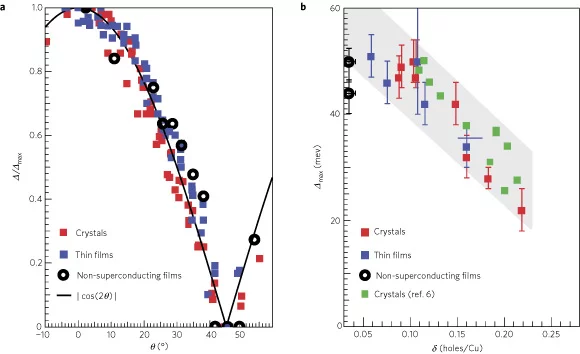A key question in condensed-matter physics is to understand how high-temperature superconductivity emerges on adding mobile charged carriers to an antiferromagnetic Mott insulator. We address this question using angle-resolved photoemission spectroscopy to probe the electronic excitations of the non-superconducting state that exists between the Mott insulator and the d-wave superconductor in Bi2Sr2CaCu2O8+δ. Despite a temperature-dependent resistivity characteristic of an insulator, the excitations in this intermediate state have a highly anisotropic energy gap that vanishes at four points in momentum space. This nodal-liquid state has the same gap structure as that of the d-wave superconductor but no sharp quasiparticle peaks. We observe a smooth evolution of the excitation spectrum, along with the appearance of coherent quasiparticles, as one goes through the insulator-tosuperconductor transition as a function of doping. Our results suggest that high-temperature superconductivity emerges when quantum phase coherence is established in a nonsuperconducting nodal liquid.
Read full article
Read full article
Facility: SLS
K. Kadowaki, D. G. Hinks, Z. J. Xu, J. S.Wen, G. Gu, C. T. Lin, H. Claus, M. R. Norman,
M. Randeria and J. C. Campuzano, Nature Physics 6, 99-103 (22 November 2009)
Paul Scherrer Institut, CH-5232 Villigen PSI, Switzerland
Publication: http://www.nature.com/nphys/journal/v6/n2/full/nphys1456.html
Reference
U. Chatterjee, M. Shi, D. Ai, J. Zhao, A. Kanigel, S. Rosenkranz, H. Raffy, Z. Z. Li,K. Kadowaki, D. G. Hinks, Z. J. Xu, J. S.Wen, G. Gu, C. T. Lin, H. Claus, M. R. Norman,
M. Randeria and J. C. Campuzano, Nature Physics 6, 99-103 (22 November 2009)
Contact
Dr. Ming Shi (ming.shi@psi.ch)Paul Scherrer Institut, CH-5232 Villigen PSI, Switzerland
Publication: http://www.nature.com/nphys/journal/v6/n2/full/nphys1456.html
